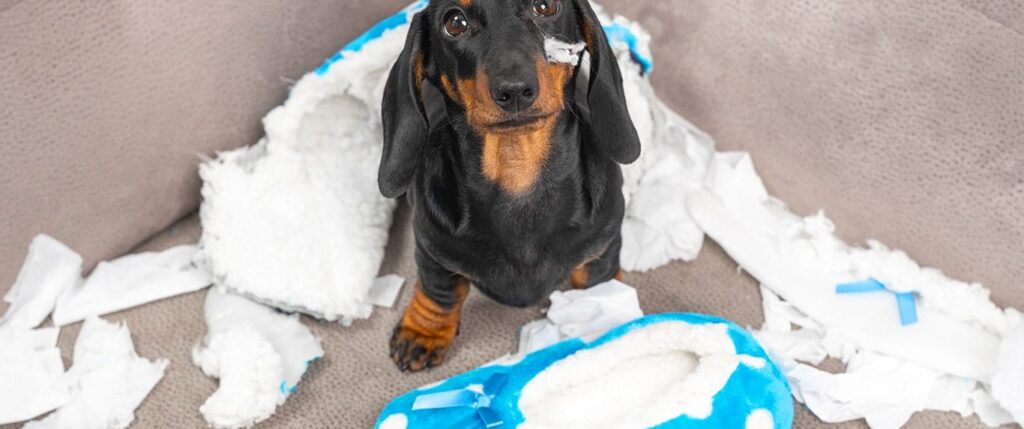Does your happy-go-lucky dog turn into a bundle of nerves every time you leave him alone? He may be suffering from separation anxiety.
If your pooch scratches or chews your furniture or barks and howls frantically in your absence, there may be more to his behavior than just boredom alone.
Separation anxiety in dogs is one of the biggest reasons good dogs turn into furry troublemakers when you’re not around.
While it’s not fully understood why some dogs suffer from separation anxiety and others don’t, it helps for owners to learn calming techniques to ease and treat anxiety in their dogs so departures can be less traumatic for both of you.
Here are five tried and tested methods dog behaviorists recommend for helping ease your best friend’s separation anxiety:
1. Don’t leave your dog alone for too long
Yes, your dog can learn to be alone for part of the day, but he really shouldn’t be left alone for longer than six to eight hours at a time. Dogs are pack animals and being left without their pack (aka you) is traumatic even for the most independent pooch. Try and find a way to structure your day so that your four-legged friend has company for the most part, even if it means asking a friend or a relative to pop by or considering a doggy daycare service for when you’re away.
2. Break triggers and associations
You know the drill: It’s time to go to work, so you put on your jacket, grab your car keys, and unlock the door. Your dog knows the drill too – and soon associates your daily routine with your imminent department. Try and mix things up a bit. When you leave home, give your dog a treat or a toy to play with to distract them. Use a different door to exit and try not to stick to the same routine every day.
3. Don’t make parting such sweet sorrow
Guilt is a real thing, especially when you know your dog becomes particularly anxious when you leave. Sometimes pet owners become emotional when leaving their dog and overexcited when they return. By paying too much attention to your departure and return, you risk reinforcing your dog’s fear of your absence. Calmly say goodbye and leave. When you come back, quietly say hello.
4. Let him know you’ll be back
Once your dog realizes that the whole world won’t come crashing down just because you’re not around all the time, their stress levels will drop. The best way to help your dog is to show them that even if you leave the room, it doesn’t mean that you’re gone forever. Tell your pooch to stay in a room by themselves while you go to a different part of the house. If your dog has severe separation anxiety, start with small 5-10 second intervals and work up to 20-30 minutes over several weeks.
5. Create personal space for your dog
Give your dog space. Having an area within your home where your dog can enjoy his time without you can help ease their anxiety when you’re away. Items that have your scent, such as an old T-shirt that you’ve slept in recently, for example, can help your dog relax and remember that you will come back.
If none of the above works, consult with your veterinarian about other options to reduce your dog’s anxiety. Your vet may prescribe anti-anxiety medications or point you in the direction of a doggie behavior specialist who can assist.

